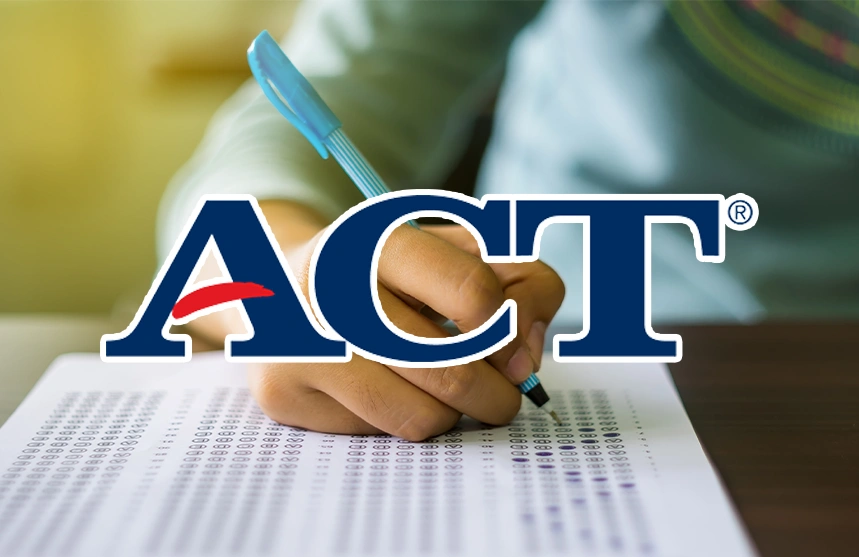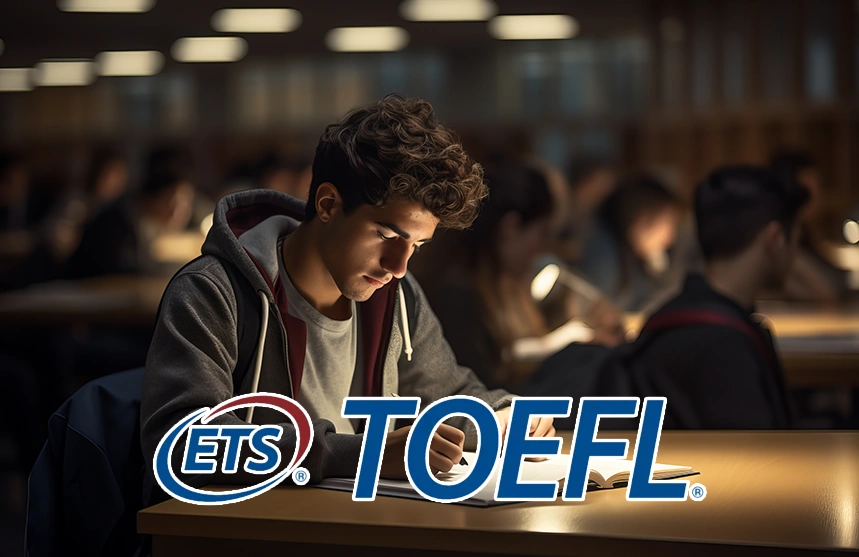Eligibility for OET Exam: Everything You Need to Know
IELTS Exam Pattern & Syllabus 2025 – Section-Wise Guide for Academic & General

IELTS (International English Language Testing System) is one of the key milestones for anyone planning to study or work in an English-speaking country. Designed for non-native speakers, this test is recognised worldwide and has two variants: IELTS Academic, which is used for university admission and study abroad purposes, and IELTS General Training, which is suitable for individuals seeking employment or migration to another country. Although both formats test the candidate’s language skills, their content and context differ to match the candidate’s specific goals.
The IELTS Exam is structured around four fundamental skill areas: Listening, Reading, Writing, and Speaking. The Listening section takes approximately 30 minutes and includes four different audio recordings. The Reading module consists of 40 questions based on three separate texts. In the Writing section, test-takers must complete two tasks within one hour. The Speaking session is a one-on-one interview lasting between 11 and 14 minutes.
Whether your goal is academic advancement or career relocation, a strong command of the IELTS syllabus is the key to a high score. This article will guide you through each section step by step to help you master the test with confidence.
IELTS Pattern 2025
If you intend to take the IELTS Academic or IELTS General Training test, it is very important to familiarise yourself with the exam pattern in detail. The table below provides a simple breakdown of what each section includes in both formats.
| Section | IELTS Academic | IELTS General Training | Time Duration |
|---|---|---|---|
| Listening | 4 audio recordings 40 questions across multiple formats |
4 audio recordings 40 questions across multiple formats |
30 minutes |
| Reading | 3 long academic passages 40 questions |
3 sections with texts from books, ads, manuals etc. 40 questions |
60 minutes |
| Writing | Task 1: Describe visual info (graph, chart, etc.) Task 2: Formal essay |
Task 1: Write a formal/informal letter Task 2: Formal essay |
60 minutes |
| Speaking | Part 1: Introduction & personal Qs Part 2: 1–2 min speech Part 3: Discussion |
Same format as Academic | 11–14 minutes |
When reviewing the pattern, you’ll notice that the Listening and Speaking sections are the same for both Academic and General Training. However, the Reading and Writing sections differ, as they are tailored to the specific goals of the test, whether for higher education or migration. It is always advisable to understand the IELTS exam pattern before you begin preparing.
The IELTS Academic test is appropriate if your goal is to study in a foreign country. In contrast, if you plan to migrate to countries such as Australia, New Zealand, Canada, or the USA, the IELTS General Training test is the right choice. The very first step towards effective IELTS Preparation is understanding the test structure. Take a closer look at the format of each section to increase your chances of achieving a high score.
IELTS Exam Syllabus 2025- Section-wise
The four main sections of the IELTS exam are Listening, Reading, Writing, and Speaking, each designed to assess a candidate’s English language proficiency. The structure of the test is carefully built to evaluate real-world language use in academic or professional contexts.
| Section | Section Description | Time Allotted |
|---|---|---|
| Listening | Candidates will listen to 4 recorded conversations/monologues and answer 40 questions based on them. | 30 minutes |
| Reading | Includes 3 long passages sourced from books, journals, or newspapers. Candidates must answer 40 questions testing comprehension and analysis. | 60 minutes |
| Writing |
Two tasks: Task 1 – Describe visual information in 150 words Task 2 – Write an essay in 250 words on a topic of general academic interest |
60 minutes |
| Speaking |
Conducted in three parts: Part 1 – General introduction Part 2 – Talk on a cue card topic Part 3 – Discussion related to Part 2 topic |
11–14 minutes |
Let’s take a closer look at the IELTS Syllabus, starting with the Listening module.
IELTS Listening Syllabus 2025 (Academic and General Training)
The Listening component of the test is common to both the Academic and General Training versions. It is divided into four sections, each progressively more complex. The questions follow the order of the information presented in the audio recordings, which helps candidates stay aligned with the flow as they listen.
| Component | Details |
|---|---|
| Total Recordings Played | 4 audio recordings (conversations & monologues) |
| Total Questions Tested | 40 questions |
| Time Allocated | 30 minutes + 10 minutes to transfer answers to the answer sheet |
| Scoring | 1 mark awarded for each correct answer |
| Question Types |
A mix of 6 types: – Multiple Choice Questions (MCQs) – Matching – Map/Plan/Diagram Labelling – Form, Note, Table, Flowchart, or Summary Completion – Sentence Completion – Short Answer Questions |
Important Insights of the IELTS Listening Module
Part 1: Conversation with society
Recording 1: a conversation between two individuals in a real-life social context (e.g., booking a hotel room or enquiring about local activities).
Part 2: Monologue of the Social
Recording 2: A self-contained monologue or speech in a generic social setting (e.g. talk about facilities or services in a community).
Part 3: Academic discussion
Recording 3: A group discussion (generally involving four individuals) in a learning or training scenario (e.g. a student clarifying a project with other students, or a tutor).
Part 4: Lecture
Recording 4: A monologue presented in a learned setting, like a lecture on a university topic.
Every step consists of different types of questions, including multiple choice questions, sentence completion queries, matching tasks, and others all aimed at testing how you interpret key points, certain details, opinions of speakers, etc.
IELTS Writing Syllabus 2025 -Academic
The IELTS Academic Writing module is designed to test a candidate’s ability to present ideas coherently, organise arguments logically, and support opinions with relevant evidence, skills essential for success in an academic environment. This section includes two tasks, both of which must be completed within 60 minutes.
| Component | Details |
|---|---|
| Total Number of Tasks | 2 (Task 1 and Task 2) |
| Total Time Allocated | 60 minutes |
| Task 1 – Report Writing |
Write a minimum of 150 words summarising and describing visual information in your own words. You may be asked to explain a: – Graph – Diagram – Process – Map – Table – Set of Data |
| Task 2 – Essay Writing |
Write a minimum of 250 words on a given topic presenting a: – Point of view – Argument – Problem Your essay should: |
Important Aspects of IELTS Academic Writing
Task 1: Interpretation of Visual Information
Here, the candidates are given a chart, table, diagram or graph. They have to summarise and define the visual content using their own words.
You might be recommended to describe a process, explain a trend, or do a logical comparison of data points.
Estimated time: 20min
Task 2: Writing An Essay
In the second task, the test-takers are to write an essay in reaction to a viewpoint, argument, or problem. Individuals should introduce a clear place and support it using suitable examples, argumentation and facts.
The subject matter is of general academic concern and is geared towards people who are pursuing undergraduate or graduate studies.
Estimate time: 40 minutes
IELTS Reading Syllabus 2025 -Academic
The IELTS Academic Reading module assesses your ability to comprehend, analyse, and interpret complex texts, skills that are essential for academic study. This section includes three reading passages, typically adapted from journals, newspapers, books, or magazines.
What to expect in the IELTS academic reading part:
Texts are in general, academic and useful to candidates pursuing higher education.
Subjects can be anything in scientific research, social science, history, or innovation; subject knowledge is not needed.
You will be asked 40 questions that will evaluate the following reading skills:
Find key points
Finding precise information
Noting the opinion or tone of the writer
Filling in sentences, tables or summaries
Headings and paragraphs in the agreement
Important Summary: IELTS Academic Reading Curriculum 2025
The Academic Reading portion of the IELTS exam aims at evaluating the capacity of the candidate to read and understand complicated texts, written in a very formal or semi-formal style. This is the information you should know:
Passage sources
Books, journals, magazines, newspapers and online articles are used to extract passages.
All texts are addressed to a non-professional audience, and you will not have to have subject-specific knowledge to comprehend them.
Nature of the content
The themes are general academic and of relevance to the candidates seeking undergraduate/postgraduate courses.
Others might consist of diagrams, graphs or illustrations and you will be required to interpret them or mention them in your responses.
Format & Structure
Three long reading texts are provided, and they gradually become challenging.
A set of questions is given after each passage.
Overall, you will complete up to 40 questions in the section.
Question Types (11 Variants):
There are several question types in the IELTS Academic Reading section designed to test your ability to understand and explain what you have comprehended as they include:
Multiple choice, matching headings, sentence completion, True/False/Not Given and so much more.
Time Allocation: The Reading section is to be done within 60 minutes.
IELTS Speaking Syllabus 2025- Academic/General Training
The IELTS Speaking test is a personal, structured interview designed to assess your general English-speaking ability. It evaluates how well you can express thoughts and opinions and engage in everyday conversations in English, similar to a native speaker. Both IELTS Academic and General Training use the same speaking test format, administered by certified IELTS examiners
| Component | Details |
|---|---|
| Duration | 60 minutes |
| Total Passages | 3 academically sourced passages |
| Passage Length | 2,150 – 2,750 words in total |
| Time per Passage | 20 minutes |
| Total Questions | 40 questions |
| Question Types |
11 different formats, including: – Multiple Choice Questions (MCQs) – Identifying Information (True/False/Not Given) – Identifying Writer’s Views (Yes/No/Not Given) – Matching Information – Matching Headings – Matching Features – Matching Sentence Endings – Sentence Completion – Summary/Note/Table/Flow-Chart Completion – Diagram Label Completion – Short Answer Questions |
The test lasts 11 to 14 minutes and is divided into three parts. Each part is structured to challenge your fluency, vocabulary usage, and ability to organise your thoughts within a limited time.
Part 1: Introduction and Interview (4–5 minutes)
This part consists of standard questions on familiar topics such as your home, family, education, work, hobbies, or interests. The goal is to help you feel at ease and ease into the conversation naturally, while also gauging how well you handle casual, everyday topics in English.
Part 2: The Long Turn
In this section, you are expected to speak at length on a specific topic. The examiner will hand you a cue card with a topic and some prompts to guide your response. You’ll have 1 minute to prepare and are expected to speak for up to 2 minutes. After your talk, the examiner may ask one or two brief follow-up questions. This part tests your ability to organise and present your thoughts clearly and logically without interruption.
Part 3: Two-Way Discussion (4–5 minutes)
This part is a more interactive discussion, where the examiner asks questions related to the theme introduced in Part 2. The questions are more abstract or analytical. You may be asked to explain a problem, express a viewpoint, compare ideas, or evaluate a situation. This section examines your ability to engage in deeper conversation, justify opinions, and communicate complex ideas effectively.
Conclusion
A high score on the IELTS exam is not just necessary, it’s your gateway to a world of academic and professional opportunities. Understanding the exam pattern and syllabus in detail will give you a clear roadmap to prepare with a steady head and a confident mindset. Whether your goal is to pursue higher education or migrate to another country, mastering all four components: Listening, Reading, Writing, and Speaking, is essential.
At MetaApply IE, we’re here to simplify your journey. From helping you choose the right IELTS Test Type to connecting you with top universities across the globe, our resources, expert guidance, and global network ensure you’re never alone in the process.
So, if you’re ready to step into a new world, whether that’s studying abroad or building a new life overseas, begin your journey with MetaApply IE, where success and opportunity meet ambition.
Frequently Asked Questions
Yes, the IELTS Speaking part is of the same form and criterion for both the academic and general training versions. It tests how well you can communicate in the English language using face-to-face interviews.
The approximate length of the test is 2 hours and 45 minutes. The listening, reading, and writing parts are taken in one sitting. Speaking tests can be organised on the same day, or 7 days earlier or later than the other modules.
The IELTS Reading module provides different types of questions that include multiple choice, sentence completion, matching headings, true/false/not given, summary completion, etc. It has 40 questions.


















































